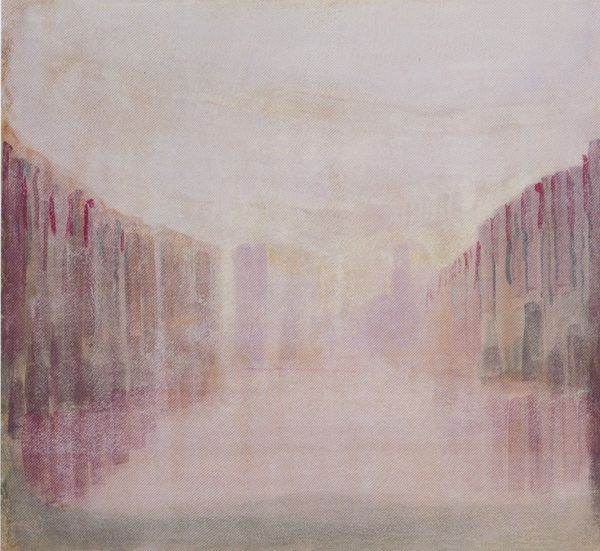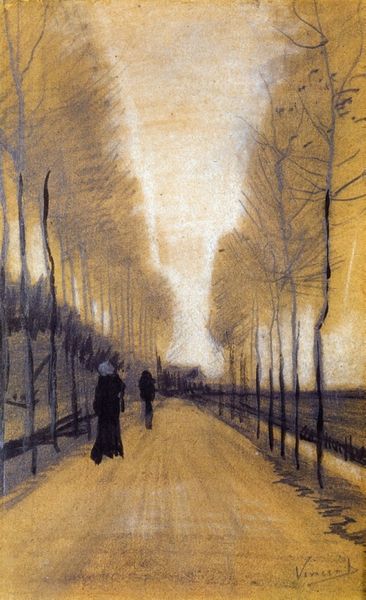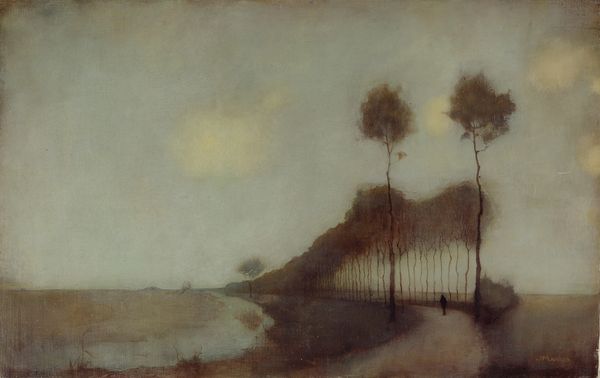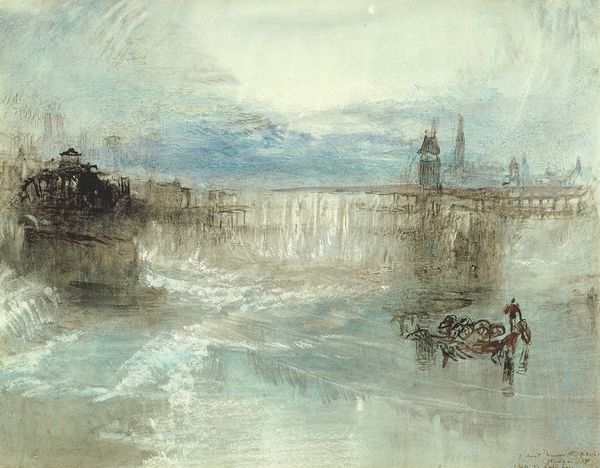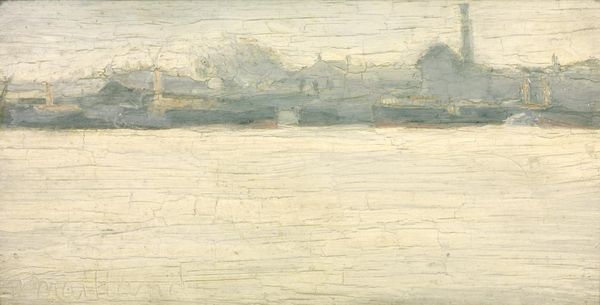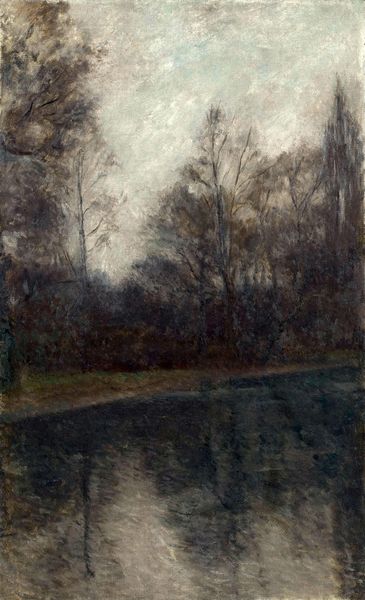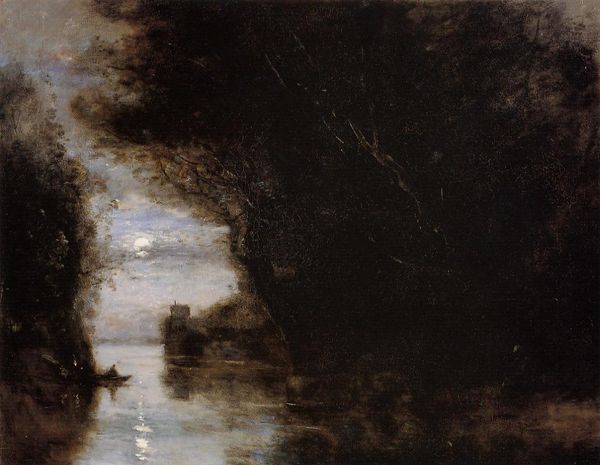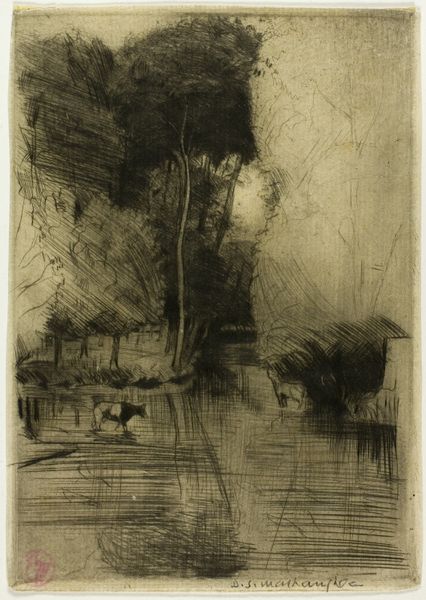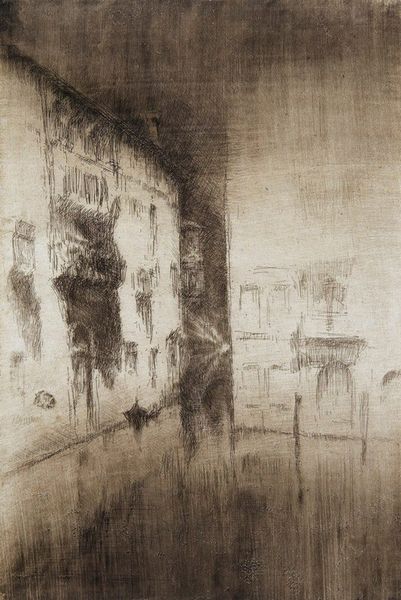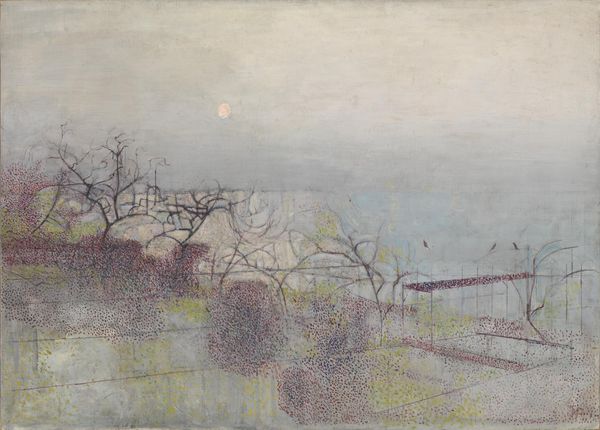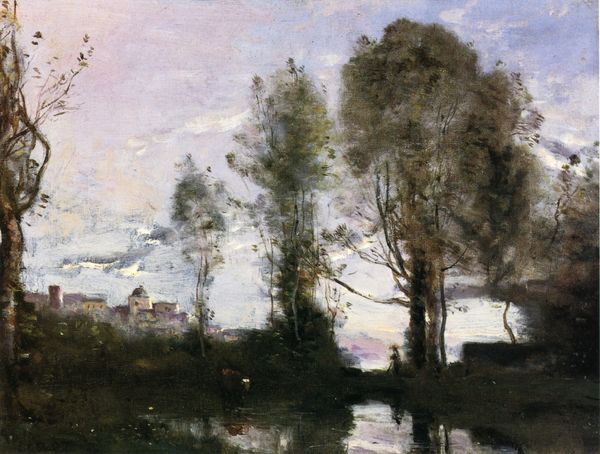
painting, oil-paint, fresco
#
painting
#
oil-paint
#
landscape
#
fresco
#
symbolism
Dimensions: 26.1 x 28.7 cm
Copyright: Public domain
Curator: This is "Daybreak (II)," an oil-on-canvas painting by the Lithuanian artist Mikalojus Konstantinas Čiurlionis, completed in 1906. His practice incorporated aspects of symbolism to generate profound meaning. Editor: Wow, that's intense. I mean, first impressions? It feels like a whisper. Or maybe what the world sounds like just before you wake up. Almost too faint, barely there. Curator: Given Ciurlionis's Symbolist inclinations and the sociopolitical context of Lithuania in the early 20th century, it could be interpreted as a moment of nascent national consciousness. We could even expand that to consider broader themes of liberation and visibility of marginalized voices. The muted palette could be a reflection on how society attempts to repress that potential. Editor: Repress... or maybe nurture? The painting's so soft. It’s like, okay, hear me out—like potential that's shy. Building takeoffs as opposed to explosions! I suppose that is a radical thing for people who tend to want all or nothing and loudly. Curator: Precisely. Consider Lithuania at the time; deeply rooted in complex social, cultural, and political currents. Oppression under Tsarist rule would lead artists to embed subtle visual codes within their artwork as a way of claiming visibility by bypassing authorities, which is very evident in the employment of a monochromatic palette that makes the artwork almost blend into nothingness. Editor: I like your reading a lot! So, this isn’t just “pretty landscape,” it’s “coded landscape." Also I noticed those tower-like things, as they were only just beginning to be prevalent at this time... Is this something new on the rise? A quiet, dreamy revolution perhaps? Curator: It aligns quite well with recent scholarship regarding Symbolist artists as proponents of freedom during highly volatile times. Editor: That makes me like it so much more! What begins quietly can have power in its tenderness, I reckon. Curator: It does shift how you experience the piece. Thanks for highlighting those affective layers.
Comments
No comments
Be the first to comment and join the conversation on the ultimate creative platform.
